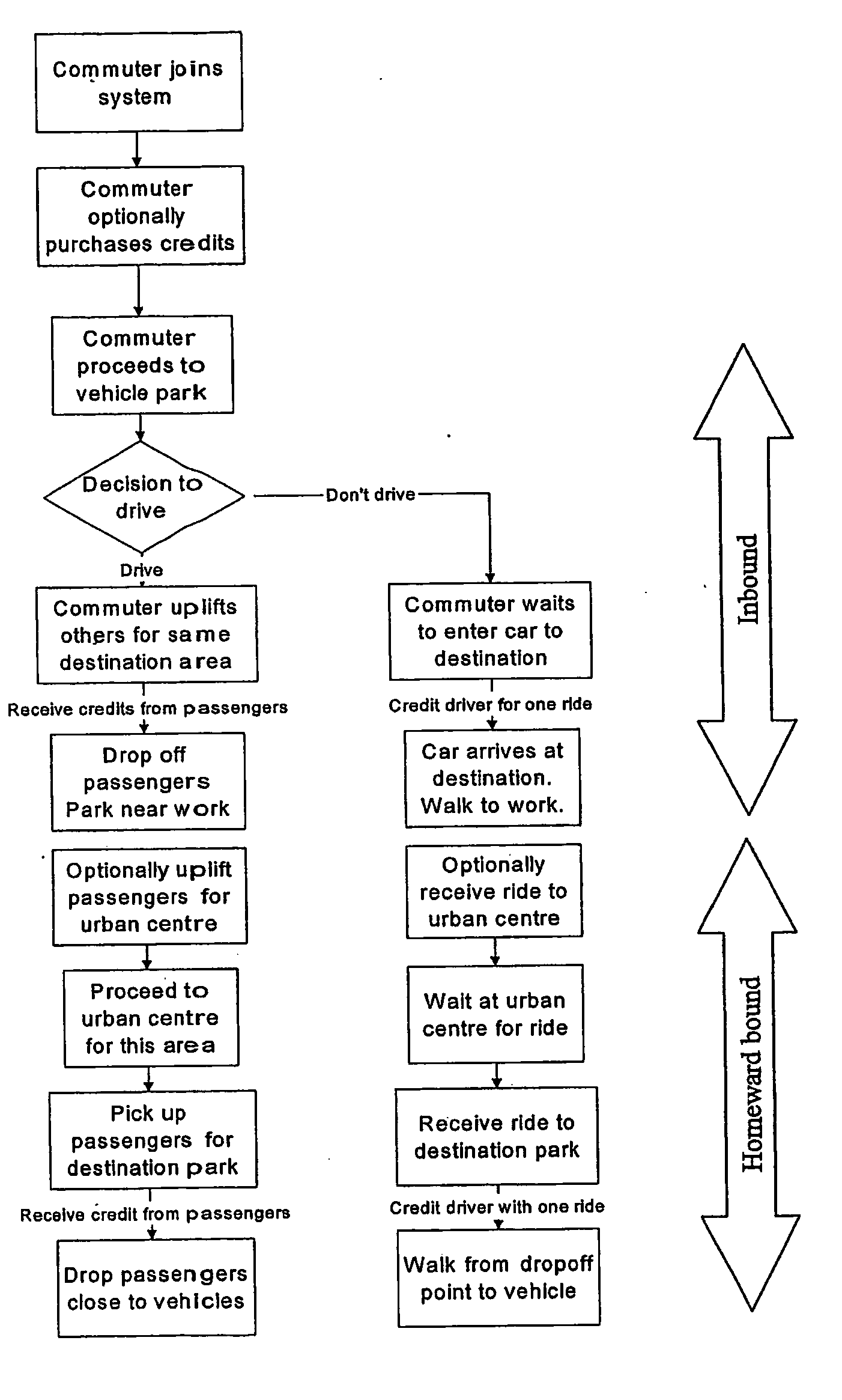Transport system
a technology of transportation system and public transportation, applied in the field of transportation system, can solve the problems of system and system production, ineffective in mass commuter situations, and insufficient public transportation to a place, and achieve the effect of reducing costs
- Summary
- Abstract
- Description
- Claims
- Application Information
AI Technical Summary
Benefits of technology
Problems solved by technology
Method used
Image
Examples
Embodiment Construction
[0163] In FIG. 1 a commuter from one of areas 101, 102, 103 takes a vehicle to a vehicle park 110, 111, 112 as better shown in FIG. 2, and, decides to park his vehicle there. He makes a judgement about whether to drive or ride, and parks in a park beside a “drive through” lane to his chosen urban area and walks a few metres to the “drive through” lane where a driver who has opted to drive in to the urban area is either waiting for passengers or will shortly arrive.
[0164] The commuter is then transported by the driver who has opted to drive onto an arterial road, motorway or other route, 120 and via a route 121 to his desired urban area 130 and preferably dropped close to his ultimate destination.
[0165] An inducement will be the ability of drivers and their passengers to be favoured, as authorised participants of the scheme, to access [if allowed irrespective of fill or if appropriately filled] HOV lanes (e.g bus lanes in New Zealand).
[0166] After working the day, or at the end of...
PUM
 Login to View More
Login to View More Abstract
Description
Claims
Application Information
 Login to View More
Login to View More - R&D
- Intellectual Property
- Life Sciences
- Materials
- Tech Scout
- Unparalleled Data Quality
- Higher Quality Content
- 60% Fewer Hallucinations
Browse by: Latest US Patents, China's latest patents, Technical Efficacy Thesaurus, Application Domain, Technology Topic, Popular Technical Reports.
© 2025 PatSnap. All rights reserved.Legal|Privacy policy|Modern Slavery Act Transparency Statement|Sitemap|About US| Contact US: help@patsnap.com



